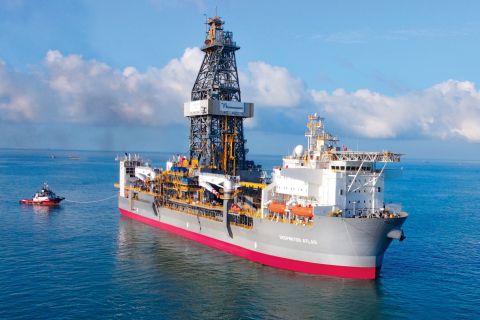Got prospects for proved-reserve and production growth? Some producers don't, and these have-nots will be anxious to buy what they need, says Shannon Nome, a managing director and senior E&P analyst for JPMorgan. "Those who haven't set up a large drilling inventory are going to have to pony up [and buy]...If they don't, they're going to be out of business in a few years," she told producers at an IPAA/Tipro program in Houston recently. Dan Pickering, president of independent-analysis firm Pickering Energy Partners Inc., said 2004 was the first year in eight years when it was cheaper to drill for new assets than buy them. "You may see some money shift from buying to drilling," he said. Nome and Pickering provided audience members with updates on energy-investor sentiment. Investors in upstream stocks are very finicky, Nome said. What may be a major worry one day is the least of their concerns the next. "Twenty-four hours later, they're on to the next issue." They flirt from day to day with love or hate for the energy sector and/or individual energy stocks. Lately, investor sentiment is that energy investments have been too successful, that "it's just so darn good, it's bad," she added. As for buying stocks with potential for returns or growth, Nome said, "if you're investing for returns, just by ExxonMobil [shares]." If looking to ride commodity-price cycles, investors are interested in oil-service stocks. Where do the independent producers fit in? That's the problem for some producers. Ideally, investors would buy stocks that have the potential for both returns and growth, she said. In analyzing a producer's stock, prospective buyers should look at the producer's free cash flow and maintenance capex, and then consider what's left. "These are important distinctions that EBITDA doesn't capture," she said. Pickering said it is easier to list what measures he wouldn't like to use in analyzing the value of an E&P stock. One important distinction that should be made is that "a barrel is not a barrel is not a barrel." A barrel of oil in West Africa has a vastly different value than a barrel in West Texas, for example. After coming up with a list of potential winners, investors then want to narrow their choices to the winner. They ask "what's cheaper than something else?" Pickering said. As for 2005 predictions, Nome expects the formation of the first U.S. royalty trust in years, and that at least one publicly held E&P company will go private. Pickering said liquefied natural gas projects will continue to move forward this year. The North American natural gas market is trying to find equilibrium: the inventory of gas is strong right now, the decline rate is high and drilling is strong. "Natural gas is one area where we're less comfortable [with forecasting prices] for 2005." As for oil, he believes the 2005 average price will be $40 a barrel, plus or minus $3. "It should be plus or minus 30% instead of $3," he said. But fundamentals are good for a continued strong price environment. He also forecasts the beginning of regional geologic exhaustion where "the oil and gas just isn't there anymore." -Nissa Darbonne
Recommended Reading
To Dawson: EOG, SM Energy, More Aim to Push Midland Heat Map North
2024-02-22 - SM Energy joined Birch Operations, EOG Resources and Callon Petroleum in applying the newest D&C intel to areas north of Midland and Martin counties.
CEO: Continental Adds Midland Basin Acreage, Explores Woodford, Barnett
2024-04-11 - Continental Resources is adding leases in Midland and Ector counties, Texas, as the private E&P hunts for drilling locations to explore. Continental is also testing deeper Barnett and Woodford intervals across its Permian footprint, CEO Doug Lawler said in an exclusive interview.
Comstock Continues Wildcatting, Drops Two Legacy Haynesville Rigs
2024-02-15 - The operator is dropping two of five rigs in its legacy East Texas and northwestern Louisiana play and continuing two north of Houston.
Chevron Hunts Upside for Oil Recovery, D&C Savings with Permian Pilots
2024-02-06 - New techniques and technologies being piloted by Chevron in the Permian Basin are improving drilling and completed cycle times. Executives at the California-based major hope to eventually improve overall resource recovery from its shale portfolio.
Rystad: More Deepwater Wells to be Drilled in 2024
2024-02-29 - Upstream majors dive into deeper and frontier waters while exploration budgets for 2024 remain flat.





